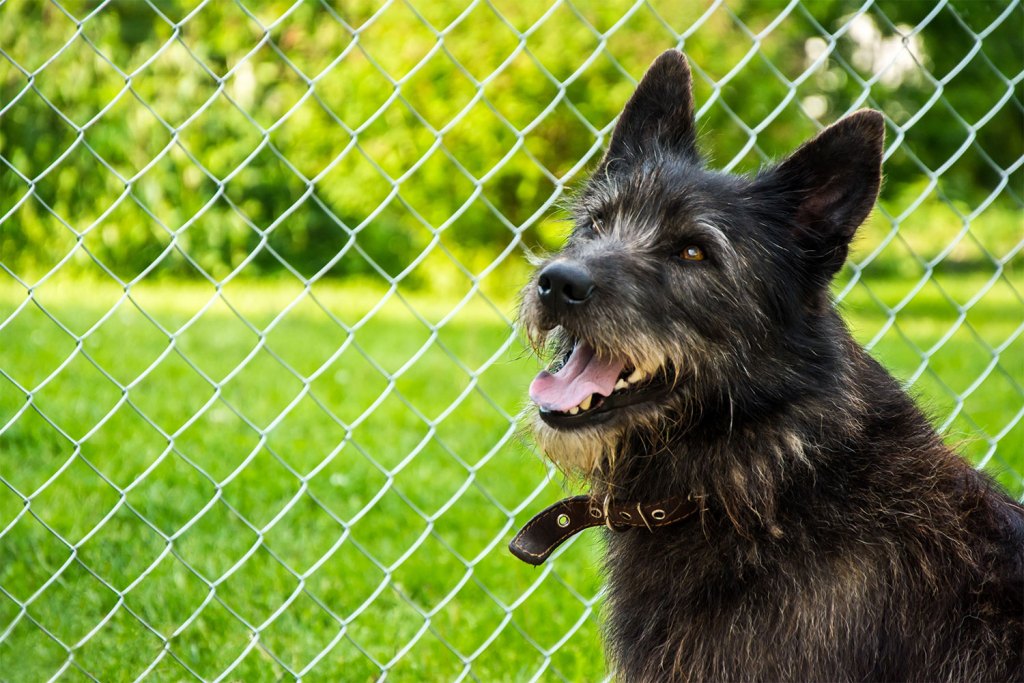An electric pet fence can be a safe and reliable way to keep your pets from wandering off your property. Electronic containment systems are fairly simple to install. Depending on the specific model you choose, you might be able to set up everything within a few hours. This guide will outline some simple do’s and don’ts of electronic pet containment system installation.
What to expect from an electric fence
Electronic fences function as training and security systems for your pet. These systems often include components such as a fencing system, transmitter, and collar worn by your animal. They emit a small static electric charge if your pet gets close enough to the boundary of your fence. The shock comes from your fur baby’s collar. Prior to an electric shock discharging, a sound is used to warn your pet and eventually train them not to venture far enough to receive the shock.
This shock is minor and should not cause your pet pain. The slight discomfort is meant to train them not to try to escape the confines of your yard. When functioning correctly, your new fence will give you the peace of mind of knowing your pet is safe and cannot run out into the street or into a neighbor’s yard.
Many electric fence models will emit an auditory signal before sending out a shock if your pet continues to move farther. This combination of sound and shock is a common way these products work to modify your pet’s behavior. As they become used to the sound, your four-legged friends quickly learn that a few more steps will lead to a shock. Most pets respond well to this type of stimulus-based training.
Your new electronic containment system will be mostly invisible. The boundaries will be defined underground but there will be little sign of its appearance above the soil. This means your fence will not interfere with your landscaping. Sometimes fences are not placed around the entire property perimeter but are used to keep pets away from areas such as pools and gardens.
When not to use an electric fence
Dogs with pre-existing health conditions should not be trained or contained with electric fences. The same goes for breeds that are excessively aggressive. Certain dogs will react very strongly to an electric fence causing them distress. Speak with your veterinarian if you are unsure if an electric fence is the right choice for your pet.
Not every dog will benefit from the training an electric fence will provide. Strong-willed dogs sometimes decide the shock is worth it if they are determined to leave your yard. For these animals, something a bit stronger and more reliable might be a better choice. There are some more potent products on the market that use more powerful shocks. These can cause pain or emit chemicals to further dissuade your dog from breaking the rules. These systems could work, but they also might actually harm your pet and cause other negative pathologies to emerge.
In general, electric fences are safe and can be helpful. They are not a silver bullet solution and cannot replace the time and effort it takes to train your dog. It is important to understand that any time you introduce something new to your pet, it takes time for them to learn and respond appropriately. Don’t be discouraged if your new fence does not work perfectly the first day you try to use it. It is a training tool so stick with it!

Installing your new electronic pet fence
First, you will want to measure the size of the area you would like to enclose. Most systems will include a transmitter and about 500 feet of wiring. In theory, the average transmitter can cover a space of about 20 to 30 acres of land. However, 500 feet of wire will cover only about one-third of an acre. That said, you can always purchase more wire if you need to enclose a really large area with your fencing system.
Designing the tract of your new fence should involve rounded edges not 90 degree angles. These harder angles will confuse your system and might make it harder to contain your pet. The wiring must form a continuous circuit or loop back to your transmitter to function correctly.
The transmitter should be placed indoors. If it gets damp or wet it could short circuit or cause a fire. A garage, basement, or storage area are good locations. Be careful about placing a transmitter in a barn or outdoor shed. Moisture will increase the danger and is harder to prevent in these spaces.
Test your wires above ground before burying them. While it is not imperative to bury your wires, it is recommended so they are not a tripping hazard for pets or humans. Do not cross any power lines with your wires. If you do not know the location of power lines on your property, be sure to call your electric service provider before continuing.
If you will cross gravel with your wires, consider wrapping them in a PVC pipe to protect them. Crossing a concrete surface is a little more labor intensive and requires special tools. A circular saw with a masonry attachment and patching compound can handle this kind of project with ease.
Finally, once your system is almost ready to go, you need to determine the boundaries for when your dog will receive the warning sound and eventual static shock. You can usually choose as close as a foot; however, this may not be far enough away to stop them from crossing the boundary. You can also have the boundary as much as 25-30 feet should you choose.
Use your fence as an additional training tool
Your new electric fence can be a powerful training and security addition to your property. There are many benefits but also some things to remember to ensure your installation goes smoothly. Remember that your new fence will work best if you use it as a tool to assist your dog training rather than a “set and forget” magic solution.


